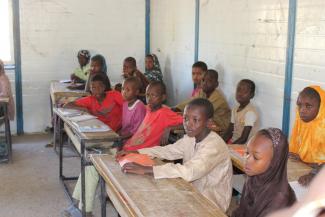In Niger, young people hold the region’s greatest potential yet many are faced with bleak economic prospects and an uncertain future. The country’s education system has high dropout and illiteracy rates, insufficient resources and infrastructure, unqualified teachers, and is vulnerable to instability.
In the city of Zinder, for the 2020-21 academic year, the students’ success rates for the primary school and high school completion were only 17.5 percent and 11 percent respectively.
In 2022, the Zinder authorities with assistance from the USAID Jagoranci (Resilient Governance) program gathered the education community to discuss the issues and a way forward to better serve students and improve their educational opportunities. More than 470 individuals representing administrative authorities, locally elected officials, civil society organizations, traditional leaders, women's organizations, parents, young people, and even some school aged children worked together to find a solution.
Together the participants developed a roadmap and commitments to improve educational outcomes in the short, medium, and long term. They included raising parents' awareness of educational challenges their students face; improving direct support, and continually monitoring student performance. They also agreed to respect the time students must dedicate to school work.
"As a result of this forum, we were asked to make efforts to complete the [year’s] programs and allow students to better prepare for the end-of-year exams. We are satisfied and proud to have made this sacrifice,” stated Ousseini Sani, a member of the teachers' union.
These changes have already yielded significant results. Success rates increased to 22.2 percent for the primary and 24.4 percent for the high school equivalent for the 2021-22 school year.

Counterpart International
